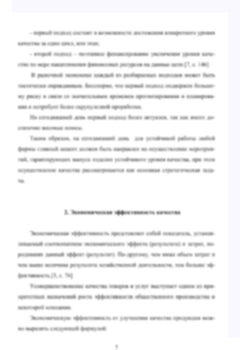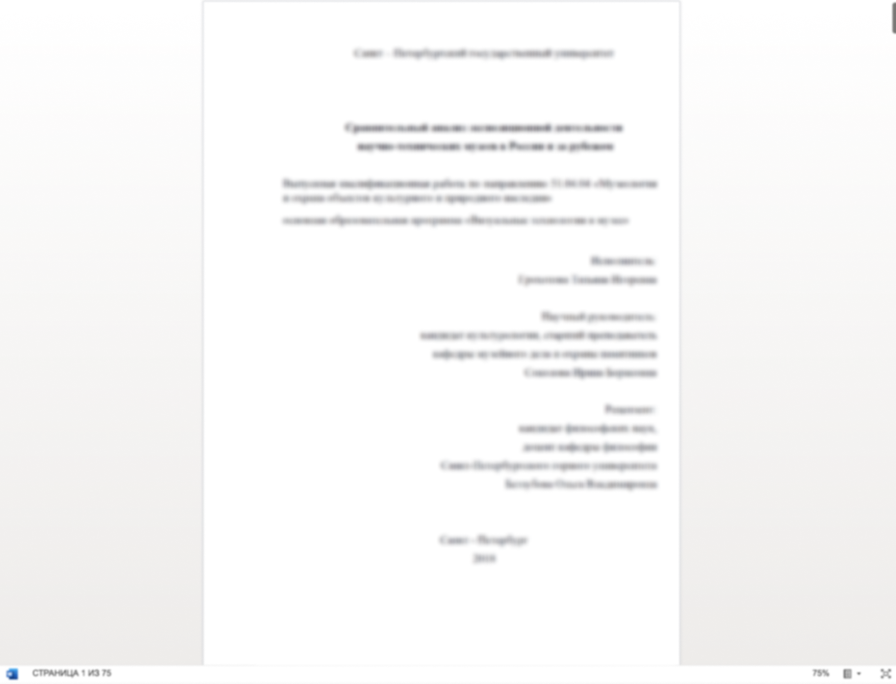
Посредничество ООН в качестве третьей стороны в вооруженных конфликтах (на примере конфликта в Йемене)
Большинство нынешних глобальных конфликтов связано с внутриполитическим, территориальным и этническим соперничеством. Они носят внутригосударственный характер, который развивается в виде гражданских войн и вооруженных конфликтов. В регионе Персидского залива примечательно, что с приходом “арабской весны” с 2011 года резко возросли темпы вооруженных конфликтов. Влекущее за собой распространение вооруженных конфликтов через границы в близлежащие и другие регионы, а затем на международный уровень, является сегодня серьезной проблемой. Йеменский конфликт является настолько серьезным внутригосударственным вооруженным конфликтом, что он представляет собой существенное посредническое участие Организации Объединенных Наций в рамках предоставленных ей полномочий и процедур. Соответственно, настоящее исследование представляет собой оценку посреднического механизма Организации Объединенных Наций в йеменском конфликте в условиях проблем и ограничений, с которыми он сталкивается. В конечном счете это показывает, насколько эти последствия могут быть адаптированы для эффективного посредничества в конфликтах. Этот практический аспект процесса посредничества ООН в Йемене оценивается в исследовании, основанном на концепциях посредничества в вооруженных конфликтах. Затем на основе критического фактического анализа йеменского конфликта он выводит применимость и целесообразность посреднических усилий и подходов Организации Объединенных Наций и других международных организаций в целом.
List of Abbreviations ……………………………………………………………………………………………………………. 1 Introduction ………………………………………………………………………………………………………………………… 2 Background of the study ……………………………………………………………………………………………………. 2 Problem Statement……………………………………………………………………………………………………………. 4 Research objectives and Research tasks ………………………………………………………………………………. 4 Literature Review …………………………………………………………………………………………………………….. 5 Overview of Primary Sources…………………………………………………………………………………………… 11 Significance of the Study…………………………………………………………………………………………………. 14 Methodology………………………………………………………………………………………………………………….. 15 Scope and the limitations of the study ……………………………………………………………………………….. 16 Chapter I-Theoretical framework …………………………………………………………………………………………. 17 1.1 Definitions of the concepts of third party mediation ………………………………………………………. 17
1.2 Third-Party Mediation process ……………………………………………………………………………………. 22
1.2.1 Features of the process of mediation: …………………………………………………………………….. 22
1.2.2 Determinants of Mediators’ efforts and approaches: ………………………………………………… 26
1.2.3 Styles of mediation: …………………………………………………………………………………………….. 27
1.2.4 Functions of the mediation process: ………………………………………………………………………. 28
1.3 Strengths and weaknesses of third party mediation process…………………………………………….. 29
1.4 Factors of effectiveness of mediation …………………………………………………………………………… 30
1.5 Mediation concepts related to UN and other IGOs or NGOs …………………………………………… 40
Chapter II- The problems of effectiveness, challenges and constraints of UN mediation in armed conflicts: the case study of the Yemen conflict………………………………………………………………………. 49
2.1 Review of the onset and dynamics of the Yemen conflict and its mediation process by the UN …………………….. 49
2.2 Analyzing successes, failures and blind spots of the UN mediation actions and its outcomes in the Yemen conflict………………………………………………………………………………………………………….. 58
2.3 Challenges and constraints of the UN mediation process in Yemen…………………………………. 66 ii
Chapter III- Assessing the Appropriateness of the UN and Other IGOs in Armed Conflict Mediation: the Case of Yemen and Beyond…………………………………………………………………………… 79
3.1 Critical aspects of United Nations, and other international organizations’ mechanisms of mediation in armed conflicts ……………………………………………………………………………………………. 79
3.2 Implications of challenges and constraints of mediation by the UN and other international organizations………………………………………………………………………………………………………………….. 82
3.3 Comparing the United Nations and regional international organizations as mediators in armed conflicts. ……………………………………………………………………………………………………………………….. 89
Conclusion ………………………………………………………………………………………………………………………… 94 Bibliography ……………………………………………………………………………………………………………………… 98 Secondary Sources: ………………………………………………………………………………………………………… 98 Primary Sources: ………………………………………………………………………………………………………….. 104
Over centuries, conflicts have been inevitable in human civilizations. In the aftermath of World War II, the United Nations laid the foundation for a world organization in 1945 giving hope to the world community on the importance of international peace and security. From then till the cold war period and up to the contemporary period various conflicts were arising at the local, regional and global level whereas the major civil wars were almost tripled while increasing the number of casualties by six folds in the decade between 2011-2020 and it needs to give an important concern on the role that UN is playing on this. With the decolonization by the 1960s, those newly independent countries from former colonial powers found it hard to carry out their administration control over their territory with ethnic divisions and later on with the cold war ideologies, conflicts raised with power-sharing, human rights issues and resource distribution. Being the only supranational organization at the global level, that represents the international community, the United Nations, as per the agreed norms and principles which are mentioned in its preamble and as well as in its preceding articles is mediating these conflicts and making efforts to confront these challenges through their process of settling disputes. However, there are various constraints and challenges that the UN faces as an international organization in its conflict mediation process.
United Nations usually decides to mediate a conflict in a state when a particular crisis is spreading on a transnational basis threatening to world peace in accordance with the charter of the UN (Article 33: The parties to any dispute, the continuance of which is likely to endanger the maintenance of international peace and security, shall, first of all, seek a solution by negotiation, enquiry, mediation, conciliation, arbitration, judicial settlement, resort to regional agencies or arrangements, or other peaceful means of their own choice.)1 Along with the uprising of Arab spring uprising, in 2011, Yemen became one of the countries which faced the consequences in the form of a civil war, which is basically a power struggle between local groups and the government. This has been extended into the international dimension where several rival foreign powers are directly involved in this conflict.
1 UN charter, Chapter VI, Article 33,URL : https://www.un.org/en/sections/un-charter/un-charter-full-text/[Accessed Date: 28 July 2020]
2
Accordingly, a brief recap of the situation in Yemen is as follows: As a result of the failure of the political transition which is supposed to bring stability in Yemen with the uprising, the long term presidency of Ali Abdullah Saleh shifted to the vice president Abdrabbuh Mansour Hadi, in 2011. President Hadi’s period was full of chaos with attacks of the separatist movement in the south and Jihadists along with corruption and poverty. The Houthi movement (known formally as Ansar Allah), Yemen’s Zaidi Shia Muslim minority, a main party to the conflict, rebelled against the former presidency (Saleh) and during the current presidency (Hadi) they took control over the Saada province, and the capital Sanaa by the late 2014 and early 2015. The Houthis and the security forces loyal to Saleh who was on a mission to take control over the entire country, made president Hadi flee abroad in 2015. This rebel group is believed to be backed by Shia power Iran whereas Saudi Arabia and eight other Sunni Arab states began to make air raids aiming to defeat Houthis and trying to restore the Hadi’s government with logistical and intelligence support from the US, UK and France.2 This has turned into a humanitarian crisis with more than 75% of the population being at risk of starvation. However, by July 2019 a key ally of Saudi Arabia, UAE decided to withdraw its forces from Yemen. In August, fights erupted in the south between Saudi-backed government forces and the Southern Transitional Council (STC) and Saudi Arabia brokered a power-sharing deal. By January 2020 fights escalated, while in April STC declared self-rule in Aden, breaking the signed peace deal.
Considering the UN involvement, it has played the mediator role, basically by dealing with the political transition process and then focusing on the special envoy’s mechanism in persuading conflicting parties to set back into a formal political process. These efforts are made in parallel with the Gulf Cooperation Council, EU, and other UN’ and with other affiliated bodies of the UN. Some of the UN mediation actions can be highlighted as follows: In November 2011, the government and the opposition parties signed the UN-led Agreement on the Implementation Mechanism for the Transition Process in Yemen where a UN special envoy plays a significant role in the negotiation process. In April 2015, the conclusion of UN Resolution 2216 that required the resumption of the political process and withdrawal of Houthis from the government and security sector, recognizing Hadi’s government as legitimate was processed by the UN via a special envoy in parallel to the initiatives of GCC. Following that resolution new rounds of peace talks continued to take place in Sweden. This led to the conclusion of the Stockholm agreement between the Houthi rebels and the
2 BBC, Yemen Crisis: Why is there a war? URL: https://www.bbc.com/news/world-middle-east-29319423/ [Date access: 18 June 2020]
3
Yemeni government which resulted in the cease-fire and exchange of prisoners along with the establishment of humanitarian corridors at three Red sea ports. This agreement is accompanied by Security Council Resolutions 2451 and 2452.
However, over a decade, since 2011, where the UN Secretary General’s initiation of the UN special envoy mission has been dragging on till today with multiple ranges of mechanisms and processes. Multiple resolutions have been passed under the consent of the UN Security Council while several other multi-party agreements were reached among the disputant parties under the coordination of the UN special envoy mission. These agreements were focused on circumventing the uprisings on the ground where it was concerned about the military uprising, humanitarian aspects with the main objective of achieving political, social and economic stability on the Yemen ground. However, so far, the UN efforts have yielded mixed results with both successes and failures, while there is a wide range of criticisms with regards to its mediation process in both positive and negative manner.

Хочешь уникальную работу?
Больше 3 000 экспертов уже готовы начать работу над твоим проектом!



